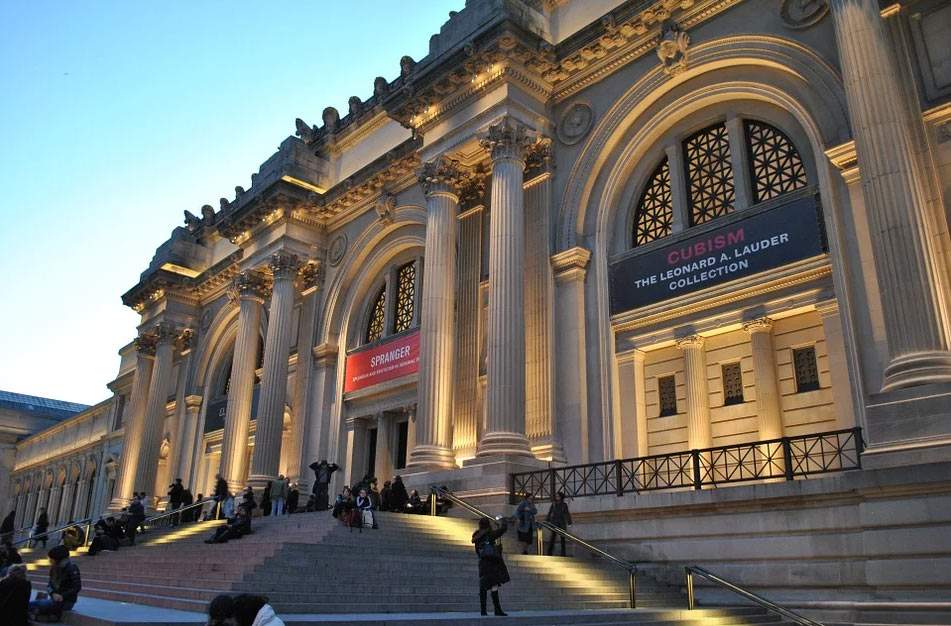The situation of museums in the United States of America is becoming more and more serious every day. And thousands of institutions could be the ones to pay the price, threatening to close forever. That is the assumption emerging from a bleak report by the American Alliance of Museums (AAM), the main organization representing museums in the U.S., and Wilkening Consulting. A survey was conducted of 850 museums across the country (art, history, science, specialty, children’s, historical monuments, botanical gardens): 98 percent of respondents had to close their doors to the public because of the Covid-19 restrictive measures, although many have reopened. In fact, during the survey period, Oct. 15-28, 71 percent of museums were open. The bad news is that 40% of those that are still closed have not yet scheduled a reopening date. Forty-five percent plan to reopen in 2021, while only 11 percent are confident they will reopen between November and December.
Museums that have reopened have averaged 35% of the pre-Covid period, with 38% of museums noting changes in audience composition: in particular, museum audiences during Covid are mostly composed of young people and residents. As for workers, 47% did not have to proceed with any layoffs, but the situation is quite different for the other 53% of museums. Two out of ten museums (21%) had to lay off full-time employees, and another 21% put them on leave. For 26% there were layoffs for part-time staff (leave instead at 27%). As for contract workers, they were laid off in 9% of museums, while 5% put them on leave. Layoffs mostly affected public outreach workers (68%), teaching staff (40%), maintenance, facilities or security staff (29%), curatorial staff (26%), and followed by marketing staff (17%), administrative staff (14%), and research and development staff (13%). For 67 percent of museums, there were cuts on resources allocated to educational activities, programming and public services.
The report also found that museums, in order to prepare for reopening, spent an average of $27,000 to adapt to the new security measures (for some of those surveyed, it even reached figures around $750,000). On average, losses due to the pandemic were $850 thousand, and overall losses are expected to be around 35 percent of the museum’s annual budget. For 2021, the forecast is far from rosy: museums expect to lose an average of 28 percent. On reopenings, however, there is cautious optimism: 70% think there is no risk of permanent closures. The remaining 30 percent, however, believe the risk is there (12 percent) or they are unable to give an answer. And the problem is precisely this 30%.
The fears are, meanwhile, for new lockdowns, since the pandemic is worsening in the United States as well, and in early November for the first time the 100,000 daily cases were exceeded and the trend seems to be upward: so this could lead to new lockdowns. And then there are fears for the financial stability of the institutions: museums in the U.S. depend much less on public disbursements than in European countries and therefore have to rely heavily on their own resources or those provided by trusts. Laura Lott, president of the AAM, speaks very clearly: “The state of U.S. museum finances is turning from bad to very bad. Thirty percent of museums have been closed since March, and those that have reopened are working with 35 percent of their regular audiences-a reduction that over the long term is unsustainable. Those that served their communities safely over the summer do not have enough money to deal with the increased costs, especially if there is a potential new lockdown in the winter. Without financial aid, we could see thousands of museums close forever.”
She is echoed by Susie Wilkening of Wilkening Consulting. “The situation is not sustainable, especially when you consider that half the museums have less than six months of savings to survive. Now museums are looking for creative ways to replace traditional revenue models, but at the same time visitors and events are being reduced. For example, on average, virtual fundraising events are 34 percent behind the results of traditional in-person events.” “Museums,” Laura Lott finally concludes, "are filling educational gaps across the country, and they are imploring federal, state, and local governments to give them more support to get out of the crisis.
Pictured: the Metropolitan Museum in New York City.
 |
| US, thousands of museums at risk of closing forever. The hypothesis in a bleak report |
Warning: the translation into English of the original Italian article was created using automatic tools. We undertake to review all articles, but we do not guarantee the total absence of inaccuracies in the translation due to the program. You can find the original by clicking on the ITA button. If you find any mistake,please contact us.